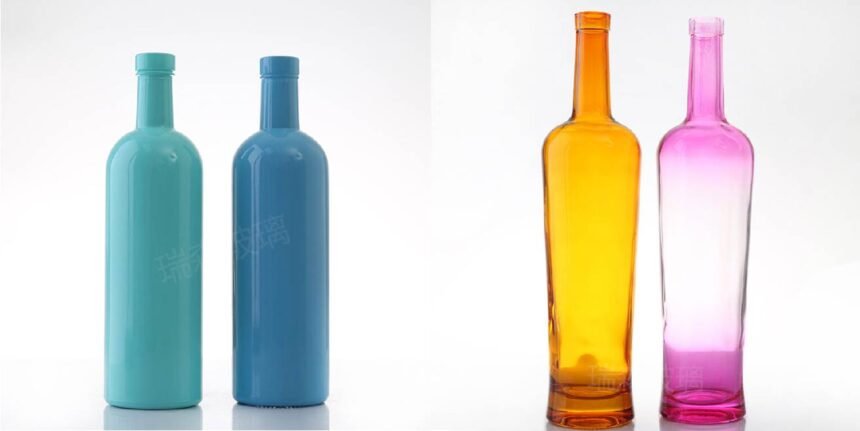Glass bottles are classy, convenient, and are utilized in nothing short of packaging perfumes, oils, wine, and spirits. Glass bottles are, however, difficult to ship. They are easily breakable and crackable, and usually they end up cracking or breaking in transportation.
As a small business owner, a manufacturer, or someone mailing out a gift, knowing how to pack glass bottles correctly can save a hassle and frustration, as well as money and time.
In this article, we will lead you through the safe way of packing glass bottles before shipping them.
The Reason Why Proper Packing is a Priority
Improperly packed glass can:
- A break or fracture in handling
- Leak and destroy other commodities
- Generate claims of reimbursement or returns.
- Defame your brand name
A professionally packed shipment guarantees the safety of your bottles. When you are in the business of bulk packaging of either beverages or spirits, it will be best to get the help of a Custom Vodka Bottles Manufacturer to get bottles that will be specifically designed to be shipped and displayed safely.
Required materials
The following supplies should be gathered before the packing:
- One good quality corrugated cardboard box (doubled-walled is much better)
- Fences or walls
- Bubble or foam wraps
- Styrofoam peanuts or air bags
- Packing tape
- Term-perishable stickers or labels
- Quality materials are the secret. They serve as a cushioning and protection against the outside forces and the glass.
How to Pack Glass Bottles Step by Step
1. Put scissors around every bottle
- Wrap each bottle with bubble wrap or foam sleeves to secure it.
- Enclose the bottle all around, including the neck and the base.
- Secure the wrap using tapes.
- This limits direct impact and also limits glass-to-glass contact.
2. Walk down the Box using Dividers
- Bottles are separated using cardboard dividers, preventing bottles from leaning over.
- They inhibit slipping in transit.
- It is also possible to use the molded pulp inserts that provide improved protection.
- In the absence of the dividers, fold some cardboard or additional wrap would be used.
3. Pad Box Base
- Put a deep layer of packing peanuts or crumbled paper at the bottom.
- This will take care of the shock of drops or vibrations during transportation.
- This is a layer necessary for long-distance shipping or shipping to a foreign country.
4. Put the Bottles into the Bottles Carefully
- Put the bottles in their places.
- Make them tight and not loose.
- When there is some space, fill it with additional peanuts or papers.
- Make sure that there is some space between the bottles and the walls of the box.
5. Occupy Blanks
- Fill up all gaps with the use of air pillows, peanuts, or rolled paper.
- This helps avoid the movement of bottles inside the box.
- The greatest hazard faced by the glass in transportation is transportation movement.
6. Then close the Box Compactly
- Apply superior packing tape.
- Sew all edges, seams, and corners.
- Tape is available that reads tamper-evident and is quite secure.
- After that, shake the box gently. When you hear some shuffling, open up and correct.
7. Write the Box well
- Put a sticker “Fragile � Handle with Care �on all sides.
- To have bottles standing up, write This Side Up.
- Put your contact details and destination.
- Well-labelled boxes help identify boxes as the handlers exercise additional care on them.
Key Lessons Pointing to the Mistakes to Avoid:
- Single-walled boxes – They are not strong and easily crushed.
- Forgetting to wrap bottles with a bow around them, direct contact will result in broken bottles.
- Space between bottles- Increased impact risks.
- Not paying attention to the labeling of boxes- Handlers can throw them around carelessly.
- Weak tape use. The box can even explode when opening it.
Steering clear of these errors will raise your likelihood of having your bottles delivered in good condition.
The Most Common Errors to Prevent
- Single-wall boxes- They are not strong and crushable.
- Forgetting to wrap the bottles in a wrapper creates contact and breakage.
- Not leaving space between bottles increases impact risk.
These are mistakes that should be avoided so that your bottles have a high chance of arriving intact.
Additional Safety:
Send the ship on Monday or Tuesday lest it suffer a delay on the weekend
- To avoid excess heat and cold, check the weather
- Insure valuable goods by shipping them through insured shipping methods.
- When you are dealing with a commercial supplier, enquire about packaging suggestions and shipping services.
For additional numbers on how to use custom bottle design to aid during shipping safety, get in touch with the industry experts or seek out the help of custom packaging.
Green Alternatives
- Take into consideration such an approach to eco-packaging as:
- Molded pulp partitions
- Alternatives to bubble wrap include paper-based options, which are quite an old concept but are still in use.
- Air pillows to be recycled
These alternatives save your products and the environment concurrently. To Learn more about custom glass bottles that are eco-friendly too, get connected with an appropriate manufacturer.
Conclusion
Making the shipment of glass bottles would take more than what a cardboard box could provide. You may ensure the safety of your products along with their on-time arrival by using the appropriate packing procedures.
Sending a bottle of wine, essential oil, and spirits, these steps may really make a difference. To businesses, working with a Custom Vodka Bottles Manufacturer ensures bottles that are both desirable in terms of branding and shipping. And in case you want to minimize shipping damage and losses, then more often than not, think of staying prepared and informed; you can learn more about your packaging alternatives now.







